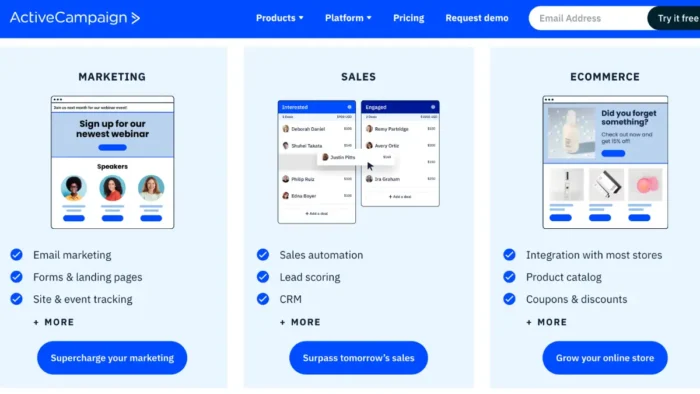If your website doesn’t meet its intended goals, your business will miss out on the opportunity to connect with prospective clients in ways that will make it easier to convert them into paying customers.
When it comes to making your website smarter and safer, there are many things you can do. In this article, we’ll walk through 5 tips on how to improve your website’s security, performance, and user experience to make it more professional.
Level Up Your Website Design
Linkedin notes that 94% of first impressions of a website are design-related, and 75% of people form their opinion of a website based on its aesthetic. Therefore, you can understand how important it is to ensure your website looks good and feels professional to reel in more visitors.
However, a well-designed website doesn’t need to be very colorful or showy. It is all about being tasteful. Your design has to link up with the theme of your site. You will notice that the top financial or business websites usually have a more minimalistic professional look, whereas a website that sells designer sneakers will look much edgier and stylish.
Website designing or designing, in general, is not part of everyone’s skillset. Therefore it is recommended that you hire the help of a professional to come up with the design for your website.
Use Identity Verification Software On Your Website
Identity verification software, also known as ID verification software, is a tool that allows you to determine the true identity of a user before they access your site. This can be useful for ensuring that only authorized users have access to certain areas of your website or for confirming that certain information is being provided by someone who is legally entitled to it.
Supply chain fraud is one area where identity verification software comes in handy. With this type of fraud, criminals try to gain access to goods or services by impersonating someone else within an organization. Without identity verification, your website can also be used for money laundering.
If your website has the provision for financial transactions but doesn’t have AML (Anti Money Laundering) and KYC (Know Your Customer) protocols in place, you can be fined and, in some cases, even imprisoned. According to Fenergo, fines for non-compliance with AML, KYC, and data privacy regulations totaled $5.4 billion in 2021.
In general, people are wary of engaging in financial transactions on websites they do not know. Adding this extra layer of security goes a long way to gaining their trust and increasing your reliability. You can contact an identity verification company like AU10TIX to set this system up on your site. For more information, you can visit this link: https://www.au10tix.com/.
Minimize Loading Time
It’s important to note that the most common reason for slow-loading websites is the use of bad or outdated code. If you’re not a programmer, this may not be something you’re familiar with. But even if you are a programmer, it’s important to know how your code affects your website’s loading time and how to fix it if need be.
However, the simplest way you can minimize your website’s loading time is by reducing the size of data on your website. For starters, you can compress the images on your site. You can also remove any unnecessary plugins or third-party scripts. You can check the number of hops or redirects it requires to get to your site.
Minimizing the loading time makes visitors more inclined to use your website. Checking your load time is fairly simple. There are various online resources available to help you with that and provide you with some basic recommendations for improvement.

Optimize Your Website for Mobiles
In today’s world, customers have become accustomed to and expect their websites to function well on mobile devices. The number of people who access the internet via their smartphones or tablets has increased dramatically in recent years. In fact, according to Statcounter, as of November 2022, mobile devices are responsible for 59.02% of the total web traffic worldwide.
To make your website more mobile friendly, you can use responsive design. Responsive design means your site will be displayed correctly on any device, be it mobile, tablet, or desktop, allowing users easy access no matter what they’re using to view it. If your website is not optimized for mobile, not only will it be inconvenient for visitors, but google will also rank it lower in their search results.
Optimize Your Site for Search Engines
Search engines are the most important traffic source for your website, so it’s important to optimize your site for search engines. SEO or Search Engine Optimization is a long game, but by playing smartly, you can significantly improve your visibility.
Michigan Technological University notes that the most important factor in driving up your search engine ranking is publishing relevant and authoritative content. Posting quality content that your readers will find useful and placing your keywords smartly will enable you to take your website to the next level. You also need to update your content regularly and use relevant backlinks to make it seem trustworthy.
Hopefully, this article has aided your quest to make your website smarter, safer, and more professional. You can always hire a professional who will help you with this for a cost. If you want to do it yourself, make sure you continue your research and learn about each element in this article in detail.





